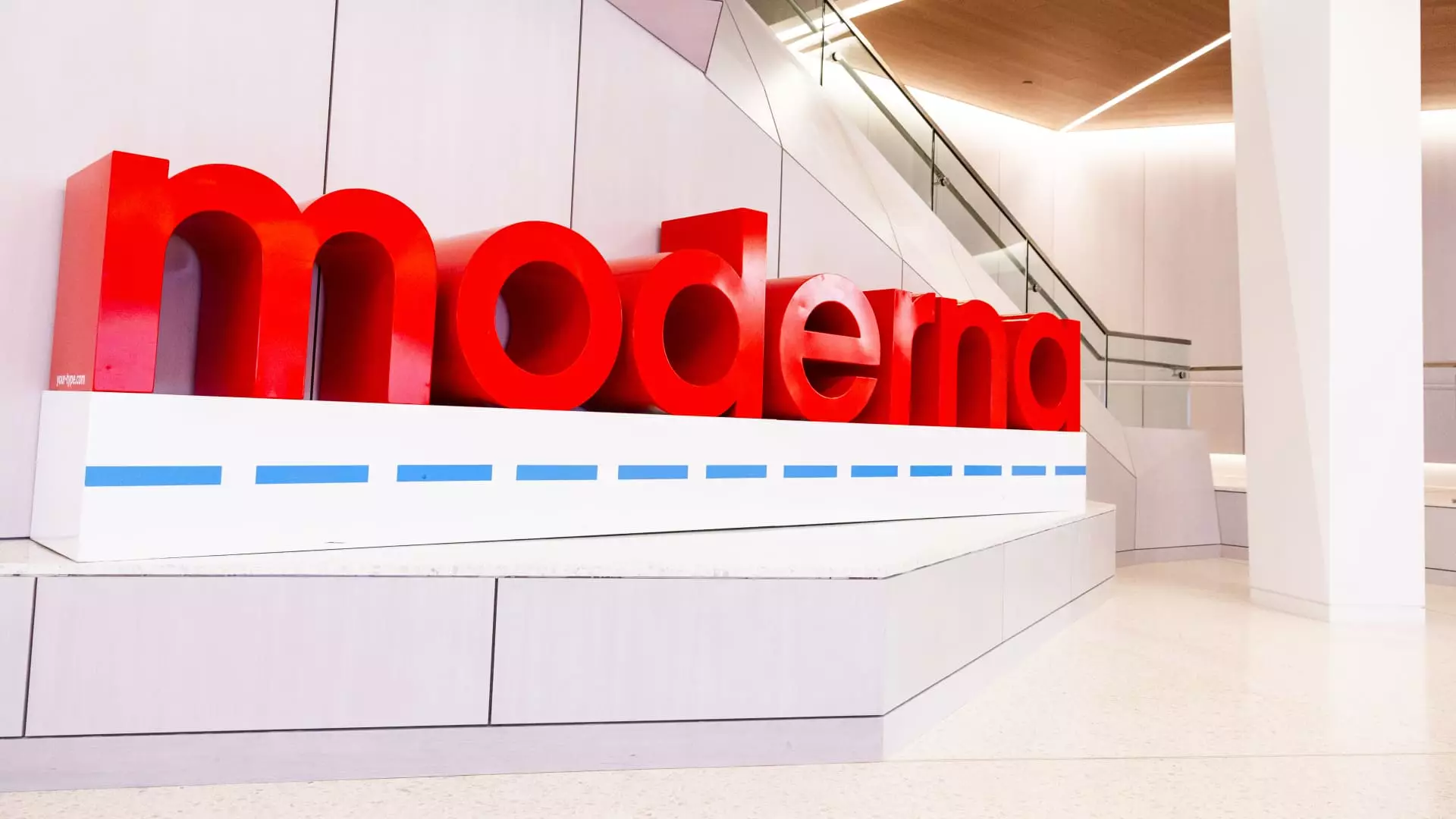In an unexpected move, Moderna announced on Monday that it has revised its sales projections for 2025 downwards by approximately $1 billion. The biotech firm, known for its pivotal role in the Covid-19 vaccine rollout, is now estimating revenues between $1.5 billion and $2.5 billion. This decision comes amidst a backdrop of potential challenges anticipated later this year and is part of a larger strategy to streamline costs while broadening its product offerings. The company highlights that a significant portion of this revenue is expected to materialize in the latter half of 2025, primarily from its Covid vaccine and the recently introduced vaccine for respiratory syncytial virus (RSV).
This downward revision represents a stark decrease from earlier forecasts of between $2.5 billion and $3.5 billion, which had been projected as recently as September. At that time, Moderna had expressed optimism about achieving break-even operating cash flow by 2028, a target now postponed from the previously anticipated 2026.
Moderna’s stock price reacted unfavorably to this news, plummeting 18% in premarket trading on Monday. The ripple effects were felt across the vaccine sector, with other companies like Novavax, BioNTech, and Pfizer also witnessing declines in their stock values. Moderna’s Chief Financial Officer, Jamey Mock, articulated a cautious approach, underscoring the uncertainties facing the company as it prepares for what it currently perceives as potential headwinds.
Mock pointed out several key factors contributing to this cautious outlook. One notable challenge is intensified competition within the Covid-19 vaccine market, where Moderna’s share of the U.S. retail market has decreased from 48% in 2023 to around 40% by the end of 2024, with expectations of further decline. The partnership between Sanofi and Novavax to co-commercialize a Covid vaccine may exacerbate this competitive landscape.
Another critical issue affecting Moderna’s projected sales is the decline in vaccination rates, which have reportedly dropped by about 7% in the U.S. retail market compared to the previous year. This waning enthusiasm for vaccines, which has been observed nationwide, raises concerns for the company as it strives to maintain revenue streams from its flagship products.
Additionally, Mock highlighted operational challenges, including the timing of manufacturing agreements with various countries and the uncertainty surrounding the Centers for Disease Control and Prevention’s (CDC) recommendations for RSV revaccination. These factors collectively add layers of complexity to Moderna’s strategic planning and forecasting.
Despite these challenges, Moderna remains committed to trimming approximately $1 billion from its cash expenditure forecast for 2025, with intentions for an additional $500 million cut in 2026. Mock emphasized those measures as essential steps to maintain financial stability during this turbulent period. The company’s focus on maintaining liquidity and operational efficiency is geared towards creating a robust foundation for future growth.
In light of the declining demand for its Covid vaccine—once a lucrative product—the company is eager to diversify its offerings. Moderna has set a goal of garnering approval for 10 new products within the next three years. This includes promising combinations such as a dual vaccine targeting both Covid-19 and influenza, as well as a “next-generation” Covid vaccine, with three approvals anticipated in 2025 alone.
At the heart of Moderna’s strategy is its innovative messenger RNA (mRNA) technology, which has powered its vaccines against Covid and RSV. This platform holds the potential for groundbreaking advancements in vaccine development, positioning Moderna as a leader in the biotech landscape. As the company gears up for the prestigious JPMorgan Healthcare Conference, it aims to showcase its resilience and forward-thinking approach to navigating the evolving market dynamics.
While Moderna’s reduced sales guidance for 2025 signals an adjustment to a challenging environment, its commitment to cost management and product diversification reflects a strategic pivot that could lay the groundwork for future success in a rapidly changing healthcare landscape.

